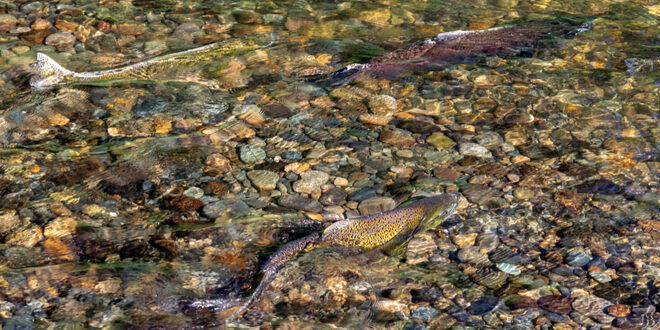The Bureau of Reclamation announced this week that the Phase 3C of the Lower Clear Creek Floodway Rehabilitation Project has been completed, concluding the restoration of more than 2 miles of stream channel on Bureau of Land Management property below Whiskeytown Dam.
“Through river restoration actions, Clear Creek has become one of the most valuable, highly productive habitats for naturally produced salmon and steelhead in California’s Central Valley,” said Charlie Chamberlain, a fish biologist for the Service. “Salmon and steelhead deposit millions of eggs into Clear Creek’s gravel beds each year upstream of the Phase 3C restoration area, and the habitats created here will improve the juveniles’ survival and their chances to return as adults.”
Phase 3C site near Redding, restored a section of Clear Creek to its original path, which had been diverted by miners decades ago, and created fish habitat features such as side channels, alcoves and wood jams. It also provides habitats for deer, beavers, migratory birds, amphibians and other wildlife.
“Clear Creek now supports a variety of great recreational experiences like swimming, horseback riding and fishing, and the abundant wildlife make bird watching and nature walks exciting,” said BLM ecologist Laura Brodhead.
Phase 3C was funded through implementation of the Central Valley Project Improvement Act, which called for restoration of Clear Creek when it was passed in 1992. The overall Lower Clear Creek Floodway Rehabilitation Project, which was initiated in 1998 is funded jointly with the State of California and benefits from partners such as NOAA Fisheries, National Park Service, California Department of Water Resources, and California Department of Fish and Wildlife, as well as local agencies and stakeholders.
 California Water News Daily Your Source For Water News in California
California Water News Daily Your Source For Water News in California


